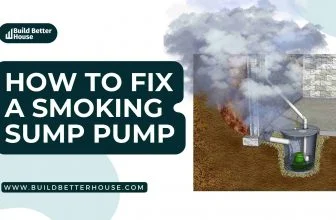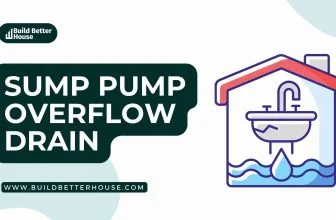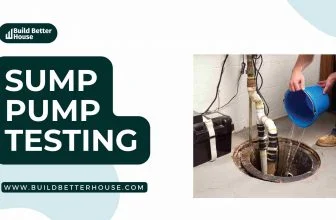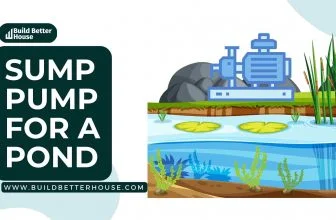How Many Sump Pumps Do I Need To Prevent Flooding?
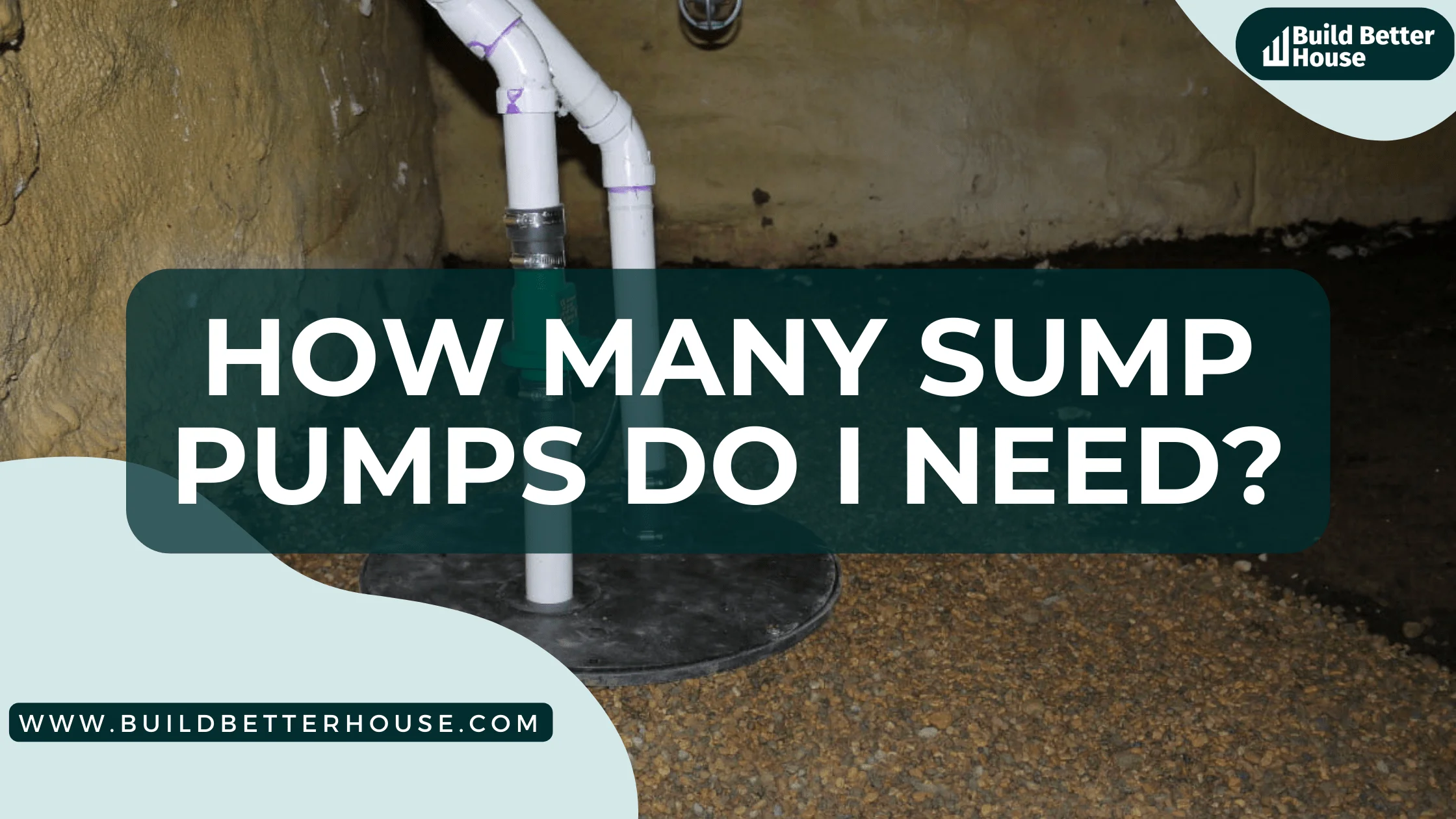
Are you concerned about the threat of flooding in your house and wondering how many sump pumps do I need to prevent floods?
If you are wondering how many sump pumps you need, there is no need to stress because you can quickly find all the information you need in this article by examining a few parameters.
Which type of sump pump do you use?
How many sump pumps do I need? If this question concerns you, you should first identify the sump pump type you use since it’s essential to understand this question well.
There are two common types of sump pumps: submersible sump pumps and pedestal pumps.
Submersible pumps contain the pump and motor in one unit. Because submersible pumps are entirely submerged in the water basin, they are often quieter, save space in your basement, and clog less than a pedestal. However, Submersible pumps are often more expensive and incur higher maintenance costs.
Pedestal sump pumps, on the other hand, are upright machines with motors directly attached to the top. But, it also can be louder and take up more space than the submersible pump.
If your home is deeper into the water table, has heavier seepage issues, or requires a farther drainage point, a one-half horsepower submersible pump can give you the added power you need.
Also, If the inflow of water is too much for your pump to handle consistently, consider installing a secondary pump to help with the water in the sump pit.
Is your current sump pump efficient?
The efficiency of your sump pump is an essential factor to consider when protecting your basement from flooding. It also played a vital role in analyzing your question, ‘how many sump pumps do I need.’
Generally, one sump pump can be efficient even for a big basement, but it depends on the type of pump and how well it’s installed.
Some homeowners are satisfied and confident with their one sump pump; however, no matter the size of your basement, if your sump pump can’t do its job correctly, you may need a second sump pump or one with more power.
A little water resting in the sump pit is normal, but if your pump can’t handle the inflow of water consistently, a secondary pump can help. This could be due to an inadequate size or power rating for the primary unit.
Additionally, some professionals recommend getting a battery backup even if your main sump pump is efficient, as this will provide additional protection in case of a power outage. An efficient and reliable sump pump system is essential for keeping your basement dry and safe from flooding.
Do you live in a wet, rainy area?
Another factor necessary to know precisely how many sump pumps do I need is where I live. Since the weather in your location is what is best to understand the needs of your home
Living in low-lying areas or, for instance, the rainy season can be challenging; it is also important to consider getting a backup sump pump. This will ensure that even if your current sump pump fails or has mechanical issues, you still have protection against flooding and mold growth.
Investing in a backup sump pump is essential in protecting your home from floods and mold growth in wet climates.
How many sump pumps do I need?
How many sump pumps do I need? Do I need more than one sump pump? Maybe you posed this question for yourself because of your flooded basement. Let’s look into this before you buy a backup pump.
Buying depends on how your current sump pump is performing. A battery backup is recommended for power outage situations and basements prone to flooding. A second sump pump is advisable to protect you from the mechanical failure of your primary sump pump.
If you are a safety freak, keep reading; let’s look into this more thoroughly so that you can protect it from floods. Below are the steps one should follow to clear up the query of ‘how many sump pumps do I need.’
Measure the square basement footage
To know ‘how many sump pumps do I need, the first step is measuring the square footage of your basement, which is an essential step in determining the size pump and layout of your space. It’s also necessary for calculating the cost of any renovations or additions you may want to make.
- To accurately measure the square footage, you’ll need to measure each wall from floor to ceiling and add up all four measurements.
- Additionally, it’s important to note how deep your basement floor is below ground level. This will affect the amount of natural light that can enter the space and could impact any plans for remodeling or expansion.
- If you have access to a tape measure, measuring your basement should be relatively straightforward; however, if you don’t have one handy, plenty of online tools can help you quickly and easily calculate the square footage.
Once you know how much space you have to work with, it will be easier to plan out what kind of projects or improvements you can make in your basement.
Measure the basement floor
Measuring the height of your basement floor is an essential step in ensuring that your sump pump will function properly. The water level in the trenches nearby must be lower than the finished floor height for your sump pump to work correctly. To measure this,
- You can use a tape measure or a laser level to get an accurate reading.
- Start by measuring from the ground outside your home to the top of the finished floor inside.
- Make sure to consider any dirt and rock that has been added around the area since it was initially built. This will give you an accurate measurement of how high your basement floor is compared to the surrounding area.
Once you have measured how high your basement floor is, you can determine if there are any areas where water could be higher than this level. If so, you may need to install a sump pump or other drainage system to ensure that water does not enter your home and cause a risk of water damage.
Knowing how tall your finished ground is will help you decide what type of drainage system would work best for your situation.
Estimate how much water enters the basement
You’ll want to know how water enters the basement to estimate how often you need to run your sump pump. If a lot of rain falls in a short time, or if you have a problem with runoff from higher ground entering your basement at high pressure, higher than your finished floor height.
This means you need to know how tall your finished base is, not how tall it used to be, before you build up the area around it with dirt and rock. You can measure this. You’ll need to know how much square footage your basement is and how deep your basement floor is.
Add an extra backup sump pump
Most people install battery backup sump pumps because they are compact, easy to use, and efficient. You should have at least one backup pump if your primary sump pump fails or is overwhelmed by rising water levels.
Knowing ‘how many sump pumps do I need for my basement’ can be challenging because it depends on how much water is entering the area, how ample the space is, how low your floor is, and how high above your finished ground level.
This means you’ll need at least two sump pump systems. You should consider getting 3 if you have a huge basement or get lots of rain. If you’re getting lots of rain, it might be time to invest in some drainage improvements, like installing an underground drainage system.
You can determine the answer to your question, “how many sump pumps do I need?” by following these 4 easy steps. To make your blogging extremely informative, we’ve also covered a few more relevant questions that might be vital for you to know about the sump pump. To clear up all of your doubts, read them.
Is one sump pump enough?
While one is often enough for most households, a single sump pump can dry your basement. In this case, a single sump pump can handle the job of keeping your basement dry.
When installing a sump pump, it is essential to consider how much water there is in your area and how often the pump will run. If you have a lot of water flow or the pump runs frequently, then two pumps may be necessary to ensure that your basement stays dry.
Furthermore, having two pumps can provide redundancy so that if one fails, the other can take over until repairs are made. Ultimately, whether one sump pump is enough depends on the individual situation and should be evaluated on a case-by-case basis.
How can you tell if your existing sump pump is not powerful enough?
To tell whether your existing sump pump is powerful enough or how many sump pumps do I need, you can check the following:
- The current pump’s flow rate (gallons per hour) must equal the flow rate of water entering the pit.
- The pump’s lift capacity should be 10 feet above the basement floor for shallow sump pits or 15 feet for deeper pits.
- Voltage and amp ratings- A too-weak sump pump will need more power lines to pump out all the water from your pit quickly. You will need to upgrade accordingly.
By checking the pointer mentioned above, you can quickly identify and clear your query of ‘how many sump pumps do I need.’
Is it better to have one large sump pump or multiple smaller ones?
The answer to this question depends on the size of the area being drained, the water pressure and flow rate needed, and the cost. One larger sump pump can cost more than multiple smaller ones but may be better for large areas if it has a more significant water pressure and flow rate.
On the other hand, multiple smaller sump pumps are usually better for small rooms, mainly if space is limited since they require less maintenance and have less of an effect on energy bills. Ultimately, it all comes down to personal preference and budget.
Do you need a crawlspace sump pump?
Sump pumps keep moisture out of a crawlspace, an enclosed space that sits underneath the ground floor and runs the length of the house. These pumps help keep the crawlspace dry by directing water away from it and into a designated area, such as a drain or sewer system.
Crawlspace sump pumps can be beneficial for keeping your home from creating a risk of water-damaged due to excess water and risk of flooding, as well as preventing mold growth and other water-related issues.
Similar tutorials to check out
Sump Pump Vents: Why You Need One and How to Install It?: Are you looking for a simple solution to install your sump pump vent? In this article, we’ll explain why sump pump vents are necessary and how to install them efficiently.
Sump Pump Full Of Water: How To Troubleshoot And Fix It: Is your sump pump full of water? Don’t worry! In this post, we will lead you through simple procedures to troubleshoot and fix a sump pump full of water.
What You Need to Know Before Buying Portable Sump Pumps?: Are you unsure whether a portable sump pump is the best option? This guide will explore what features and capacities to look for in a portable sump pump.
Radon Sump Pump: Is It Worth Your Money? Radon sump pumps have grown in popularity recently, but do they give enough benefit to justify the cost? We came up with this article to determine whether radon sump pumps are worthwhile.
Summing up
The primary pump is intended to be your first line of defense against a flooded basement and performs the heavy lifting throughout the year. Simply plug it into an electrical outlet and double-check that the valve is properly configured.
Many homeowners learn the hard way how crucial a backup is when their power lines go out during rainfall and their primary pump stops working. Please let us know if this post helped you and cleared your concerns or doubts.
Read more:
What Is A Dry Well System, And How To Build It?
Everything You Need To Know About Crawl Space Encapsulation
9 Best Sump Pumps On The Market In 2023
Sprinkler Backflow Preventer Leaking- How To Fix?



